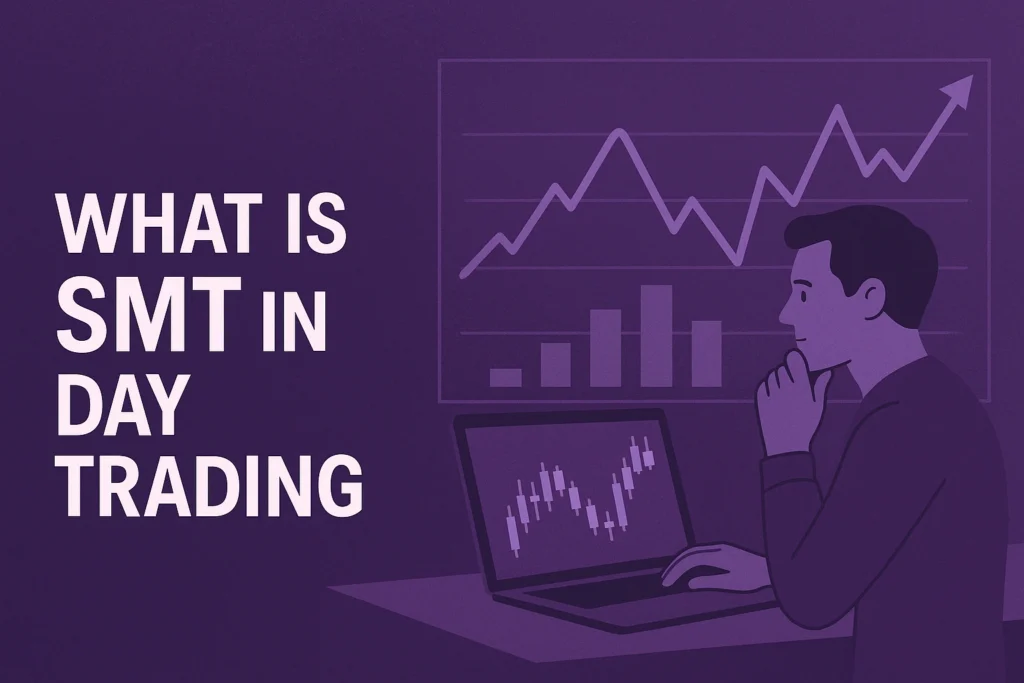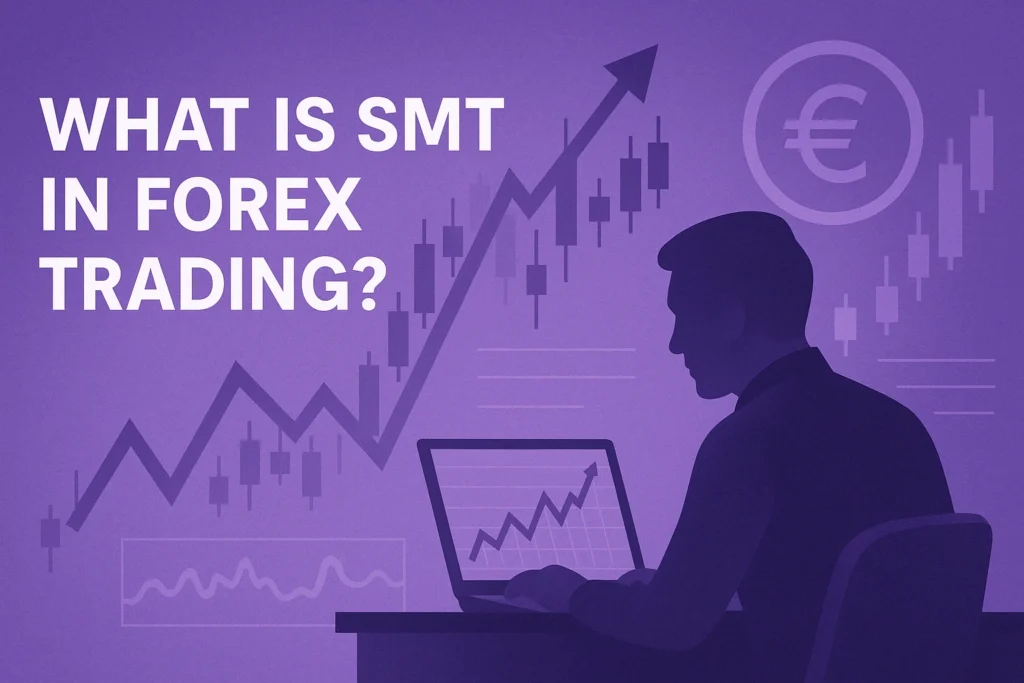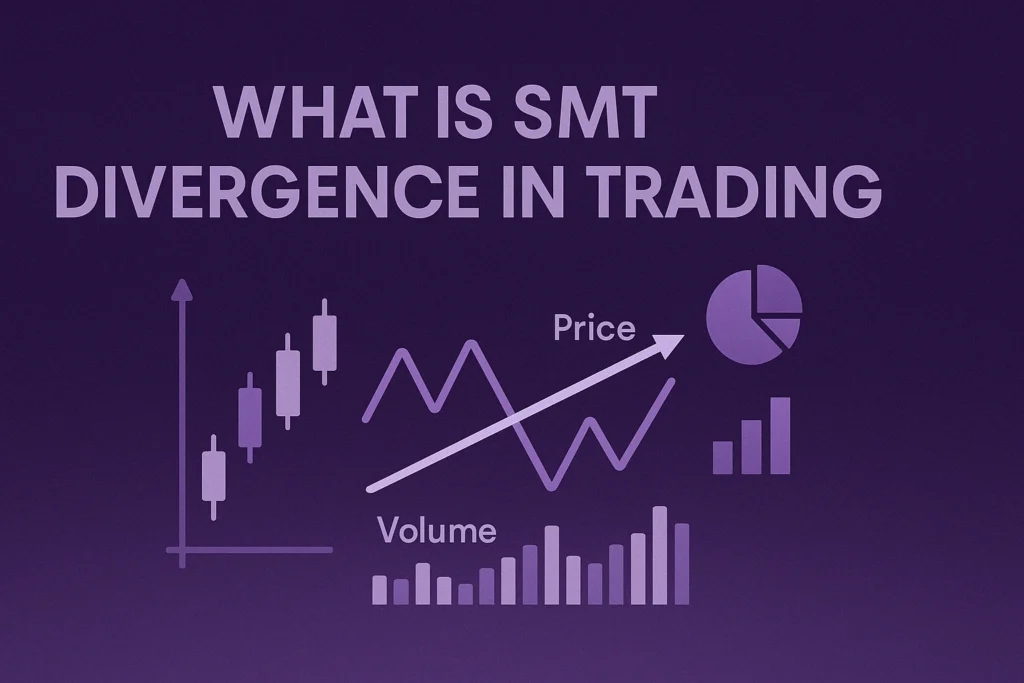In the complex world of financial markets, understanding where the big money flows can make all the difference between consistent profits and persistent losses. Smart Money Trading (SMT) has emerged as a powerful methodology that helps retail traders identify and follow institutional money movements. As someone who’s been navigating the cryptocurrency and traditional markets for over half a decade, I’ve found that mastering SMT concepts can dramatically transform your trading approach.
What is SMT in Trading?
Smart Money Trading (SMT) is a trading methodology focused on identifying and following the footprints of institutional investors, banks, and other large market participants who control significant capital. These “smart money” players have extensive resources, privileged information, and the ability to move markets with their transactions.
The core principle behind SMT is simple yet profound: retail traders (the “dumb money”) often lose because they trade against institutional players (the “smart money”). By learning to identify where smart money is positioning itself, retail traders can align their strategies with these powerful market movers instead of working against them.
Key Components of Smart Money Trading
Smart Money Trading consists of several interconnected concepts:
- Order Flow Analysis: Tracking the volume and direction of trades to identify accumulation and distribution phases
- Market Structure: Identifying significant swing highs and lows to determine market direction
- Liquidity: Understanding how smart money hunts for stops and liquidity pools
- SMT Divergence: Recognizing discrepancies between price action and underlying market conditions
- Breaker Blocks: Key supply and demand zones where institutional players enter and exit positions
What is SMT in Day Trading?

Day trading requires quick decision-making and precise entry and exit points. Smart Money concepts are particularly valuable in this high-pressure environment because they help traders identify high-probability setups.
How Day Traders Apply SMT Concepts
- Institutional Order Flow: Day traders using SMT methodologies track volume spikes and price action at key levels to identify where institutional orders are being filled.
- Intraday Liquidity Grabs: Smart money often creates sharp price movements to grab liquidity before moving the market in their intended direction. Day traders learn to identify these “traps” and position accordingly.
- Market Structure Breaks: When price breaks a significant structure level on an intraday chart, SMT traders recognize this as a potential sign of institutional positioning.
- Time-of-Day Analysis: Institutional activity often follows specific patterns during the trading day, with the highest activity typically occurring during market opens, closes, and during major economic announcements.
Example Day Trading SMT Strategy
| Time Frame | SMT Component to Analyze | Action |
|---|---|---|
| 1-hour | Market structure | Identify overall trend direction |
| 15-minute | Order blocks | Find potential reversal zones |
| 5-minute | Liquidity sweeps | Look for stop hunts and reversals |
| 1-minute | Entry triggers | Execute trades with tight risk management |
What is SMT in Forex Trading?

The forex market, with its massive $6+ trillion daily trading volume, is heavily dominated by banks, hedge funds, and institutional players. This makes it the perfect playground for applying Smart Money concepts.
Why SMT Works Well in Forex
- Bank Manipulation: Major banks are primary market makers in forex, creating identifiable patterns as they accumulate and distribute positions.
- Liquidity Provider Behavior: Understanding how liquidity providers operate allows forex traders to anticipate price movements.
- Intermarket Relationships: Smart money often coordinates moves across related currency pairs, creating detectable patterns.
- Economic Data Impact: Institutions frequently position themselves before major economic releases, creating traceable footprints.
Key SMT Forex Patterns
Institutional Swing Failure Patterns (SFP)
This occurs when price makes a new high/low but quickly reverses, indicating smart money has triggered retail stops before moving price in the opposite direction.
Forex Order Blocks
These are zones where significant buying or selling has occurred, showing where institutions have entered positions. These areas often serve as strong support/resistance levels when retested.
Currency Correlation Divergence
When related currency pairs show diverging price action, it often indicates smart money positioning before a major move.
What is SMT Divergence in Trading?

SMT divergence is one of the most powerful concepts within Smart Money Trading. Unlike traditional divergence that focuses on price and indicators, SMT divergence looks at the relationship between price action and underlying market conditions or behaviors.
Types of SMT Divergence
1. Price-Volume Divergence
This occurs when price movement doesn’t align with volume patterns:
- Bullish Divergence: Price makes lower lows while volume decreases, suggesting selling pressure is diminishing
- Bearish Divergence: Price makes higher highs with decreasing volume, indicating weak buying pressure
2. Internal Market Structure Divergence
This happens when lower timeframes show a different market structure than higher timeframes, often indicating a potential reversal.
3. Multi-timeframe Momentum Divergence
When price makes new highs/lows but momentum indicators on multiple timeframes fail to confirm, smart money may be preparing for a reversal.
How to Identify SMT Divergence
To spot SMT divergence effectively:
- Monitor Multiple Timeframes: Compare price action across different timeframes (1H, 4H, Daily)
- Watch Volume Patterns: Look for inconsistencies between price movements and volume
- Track Order Flow: Use order flow analysis tools to identify when large orders aren’t moving price as expected
- Observe Market Participants: Monitor how different market participants (retail vs. institutional) are positioned
SMT Trading: Key Components and Strategies
Order Blocks – The Foundation of SMT
Order blocks represent zones where significant institutional buying or selling has occurred. These are essentially supply and demand zones with a specific focus on where smart money has entered positions.
Characteristics of valid Order Blocks:
- Sharp movement away from the zone
- Significant volume compared to surrounding candles
- Clean break of structure after the block forms
- Often preceded by a liquidity grab
Fair Value Gaps (FVGs)
Fair Value Gaps represent imbalances in the market where price has moved so quickly that it hasn’t had time to establish fair value. These gaps are prime targets for future price movements as the market seeks efficiency.
How to identify FVGs:
- Look for three consecutive candles where the low of the first candle is higher than the high of the third candle (bullish FVG)
- Look for three consecutive candles where the high of the first candle is lower than the low of the third candle (bearish FVG)
Breaker Blocks and Their Significance
Breaker blocks are order blocks that have already been tested and have caused a reaction in price. These zones are particularly powerful because they’ve proven their validity through price reaction.
Trading with Breaker Blocks:
- Identify a strong order block
- Wait for price to break structure in the direction of the order block
- Look for price to return to the order block (now a breaker block)
- Enter with a tight stop loss below/above the breaker
Liquidity Hunting Patterns
Smart money consistently seeks to execute large orders where sufficient liquidity exists. This creates predictable patterns where price moves to areas of concentrated stop losses before reversing.
Common Liquidity Hunting Patterns:
- Stop hunts beyond swing highs/lows
- Fake breakouts of key technical levels
- Quick spikes during low-liquidity market hours
- False breaks of support/resistance levels
Practical SMT Trading Implementation
Step-by-Step SMT Trading Process
- Analyze Higher Timeframes First
- Identify the dominant trend direction
- Mark key structural levels
- Find significant order blocks
- Move to Lower Timeframes
- Look for market structure breaks
- Identify optimal entry points
- Find tight stop loss areas
- Confirm with Volume Analysis
- Ensure institutional participation
- Look for volume divergences
- Verify accumulation/distribution patterns
- Execute with Proper Risk Management
- Use position sizing based on risk tolerance
- Place stops at smart money invalidation levels
- Take profit at likely institutional targets
Tools and Indicators for SMT Trading
While SMT is primarily a price action methodology, several tools can enhance your analysis:
- Volume Profile: Shows volume distribution at different price levels
- Market Profile: Displays price acceptance and rejection zones
- Cumulative Delta: Tracks buying vs. selling pressure
- Order Flow Indicators: Visualize large order execution
- Relative Volume Indicators: Compare current volume to historical averages
SMT in Cryptocurrency Markets

Cryptocurrency markets present unique opportunities for SMT traders due to their relative immaturity and high concentration of retail participants.
How Crypto Whales Create SMT Patterns
Cryptocurrency markets are heavily influenced by “whales” – individuals or entities holding large amounts of coins. These whales create recognizable SMT patterns:
- Accumulation Ranges: Extended sideways price action with decreasing volatility as whales accumulate positions
- Liquidity Engineering: Creating false breakouts to fill large orders at better prices
- OTC Impact: Large over-the-counter deals creating delayed market impacts
- Exchange Flow Signals: Large transfers to/from exchanges often preceding major moves
Adapting SMT for Crypto Volatility
Cryptocurrency markets experience higher volatility than traditional markets, requiring adjustments to standard SMT approaches:
- Use wider stop losses based on volatility metrics
- Focus on larger SMT patterns rather than minor fluctuations
- Pay special attention to whale wallet monitoring
- Consider exchange-specific liquidity pools
Avoiding Common SMT Trading Mistakes
Overcomplicating the Analysis
Many traders new to SMT overload their charts with too many levels, zones, and patterns. Effective SMT trading requires clarity and focus.
Solution: Focus on the most significant structural levels and highest-probability setups. Quality over quantity is essential.
Ignoring Market Context
SMT patterns work differently depending on overall market conditions and timeframes.
Solution: Always start analysis from higher timeframes to understand the broader context before drilling down to entry-level details.
Failing to Adapt to Market Evolution
Markets evolve, and smart money adapts their tactics over time.
Solution: Continuously refine your understanding of current institutional behavior rather than relying solely on historical patterns.
Neglecting Risk Management
Even the best SMT analysis can be wrong – institutional players sometimes change their plans or may have different time horizons than you.
Solution: Always trade with defined risk parameters and position sizing appropriate for your account.
FAQ: Smart Money Trading
What’s the difference between SMT and traditional technical analysis?
Traditional technical analysis often focuses on indicators and chart patterns available to all traders. SMT specifically targets the footprints of institutional players by analyzing order flow, liquidity, and market structure. While technical analysis tries to predict where price will go based on historical patterns, SMT attempts to follow what the largest and most informed players are doing right now.
How long does it take to master SMT concepts?
Mastering SMT typically requires 6-12 months of dedicated study and practice. The concepts themselves can be learned relatively quickly, but developing the ability to recognize patterns in real-time and trade them confidently takes significant screen time and experience.
Is specialized software required for SMT trading?
While specialized software can help (particularly for order flow analysis), the core SMT concepts can be applied using standard charting platforms. The most important capabilities are multi-timeframe analysis and volume data. Advanced traders may benefit from order flow tools and heatmaps, but these aren’t essential for beginners.
Can SMT be applied to all markets and timeframes?
Yes, SMT concepts work across all liquid markets and timeframes. However, they tend to be most effective in high-liquidity environments where institutional participation is significant, such as forex, major stock indices, and large-cap cryptocurrencies. The principles scale across timeframes, though implementation details may vary.
How does SMT perform during black swan events?
During extreme market events, SMT can actually provide early warning signals as institutional players often position themselves ahead of major news. However, during the height of market chaos, even smart money can be caught off-guard, making standard patterns less reliable until liquidity normalizes.
Conclusion: Mastering SMT for Trading Success
Smart Money Trading represents one of the most sophisticated approaches to understanding market behavior. By learning to identify and follow institutional footprints through concepts like order blocks, market structure, and SMT divergence, traders gain a significant edge.
The journey to SMT mastery requires patience, consistent practice, and continual refinement. Start by focusing on the fundamental concepts outlined in this guide, practice identifying them on historical charts, and gradually implement them in your trading with appropriate risk management.
Remember that even the smartest money occasionally takes losses, so no approach is infallible. However, by aligning yourself with the market’s most informed and capitalized participants rather than trading against them, you dramatically improve your odds of long-term success in any market environment.
Whether you’re day trading cryptocurrencies, swing trading forex pairs, or investing in traditional markets, SMT concepts provide a framework for understanding the true drivers behind price movement – the actions and intentions of smart money players who ultimately control market direction.
Adam Fent is a forex trader who has been involved in the markets since he was a teenager. He started out by day trading penny stocks, and eventually transitioned to Forex because of its liquidity and 24-hour nature.
He has been consistently profitable for the past several years, and is always looking to improve his trading skills. When he's not trading, he enjoys spending time with his wife and two young children.


